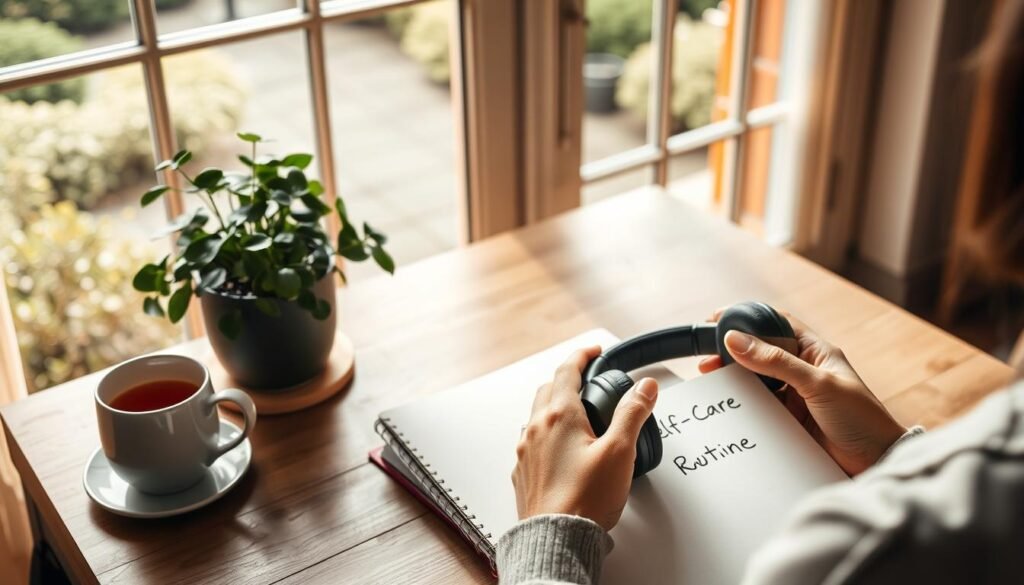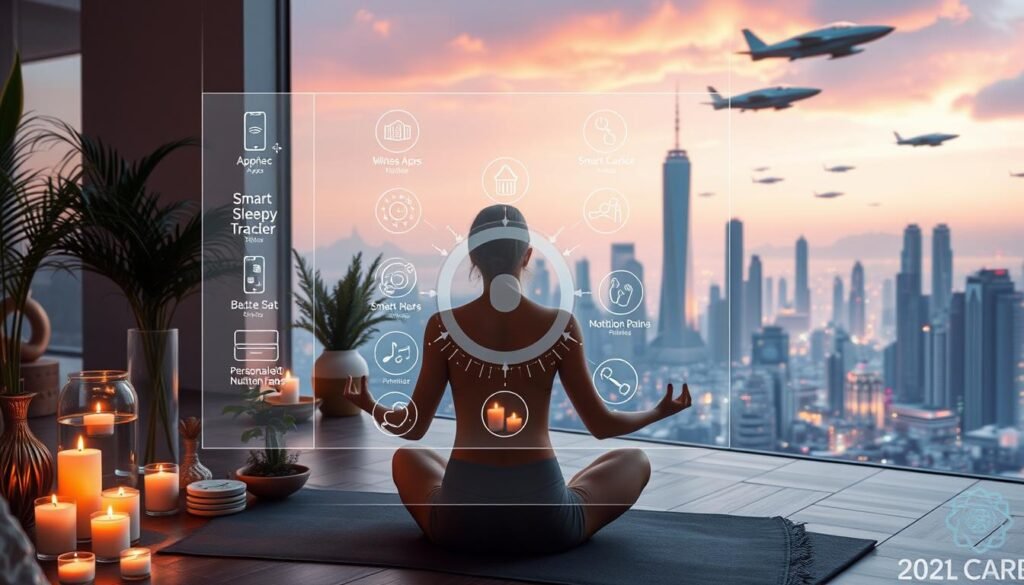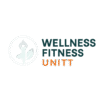You’ve tried meditation apps, bullet journals, and endless bubble baths. Yet, exhaustion still feels like your default setting. In today’s hustle-driven world, traditional self-care methods often add guilt instead of relief.
The latest research shows 63% of Americans give up on wellness practices within three weeks. Why? Most strategies ignore our evolving needs in a culture that glorifies nonstop productivity. But emerging approaches for 2025 flip the script entirely.
This isn’t about adding more tasks to your calendar. We’re exploring sustainable systems that work with your chaotic life – not against it. From micro-resets that fit between meetings to tech tools that prevent decision fatigue, you’ll discover refresh methods designed for real humans.
Key Takeaways
- Redefine personal care beyond spa days and green smoothies
- Integrate science-backed micro-practices into existing routines
- Leverage smart technology to reduce mental load
- Build resilience through adaptable weekly frameworks
- Prioritize consistency over picture-perfect rituals
1. Recognizing When Self-Care Becomes Overwhelming
Have you ever felt bad after seeing someone’s perfect self-care post on Instagram? What starts as a good idea can turn into too much pressure. This can make self-care feel like a chore.
The Paradox of Perfection in Wellness Culture
Today’s wellness scene often focuses on looks over real experiences. Do you put off yoga because you want to look good in your leggings? Or do you feel bad for using a quick mindfulness app instead of a longer one? These are signs that self-care has become too much.
Here are some real-life examples:
- Spending 20 minutes arranging a smoothie bowl for photos instead of enjoying it
- Resenting your “mandatory” journaling practice but fearing judgment if you skip a day
- Feeling inadequate for not affording luxury wellness retreats promoted online
Physical & Emotional Warning Signs
Your body often warns you of too much self-care before you realize it. Look out for these signs:
- Decision fatigue: Staring blankly at your meditation app options
- Resentment: Dreading your “calming” evening skincare ritual
- Physical tension: Headaches during “relaxing” bath times
A yoga teacher once said: “Clients apologize for ‘only’ doing 10 minutes of stretching. I remind them: Consistency beats perfection every time.” This is a crucial mindset for lasting self-care.
If these situations sound like your life, it’s time to find self-care habits that really work for. Not someone else’s perfect image.
2. How to Fix Your Self-Care Routine When Feeling Overwhelmed (2025 Trend)
Your self-care routine shouldn’t be a chore. In 2025, the key is to use smart strategies and tech to make it easier. Here’s how to refresh your routine without feeling overwhelmed.

The Micro-Reboot Approach
Goodbye, long yoga sessions. The latest 2025 wellness trends are all about quick resets. Try these simple actions:
- Box breathing: Inhale for 4 counts, hold for 4, exhale for 6
- Gravity drops: Let your arms fall loosely while standing, shaking out tension
- Texture grounding: Focus on how your clothes feel against your skin for 30 seconds
Apps like Moonbeam offer 1-minute meditations based on your location. Need to relax in a grocery line? Their “Checkout Chill” audio can help.
Tech-Assisted Simplicity
Smart tools now make self-care easier. The HidrateSpark STEEL bottle tracks your water intake, reminding you to drink. AI journaling apps like ClarityMind analyze your entries in real time:
“Your Thursday entries show 73% more frustration language – try a 5-minute walk outside today.”
These tools reduce the mental effort needed for self-care. They keep you hydrated and emotionally checked-in without the hassle.
3. Prioritizing What Actually Nourishes You
True nourishment comes from activities that refill your cup, not drain it. Let’s move away from Pinterest-perfect routines. Focus on what your body and mind really need for self-care amidst overwhelm.

3.1 The 5-Minute Energy Audit
Track your activities for three days using a simple color system:
| Activity | Energy Cost | Energy Return | Action Step |
|---|---|---|---|
| Morning yoga | High | Medium | Swap for 5-min stretch breaks |
| Binge-watching shows | Low | Negative | Replace with comedy sketches |
| Walking meetings | Medium | High | Schedule 2x weekly |
“Your best self-care ritual is the one you’ll actually do – even if it’s not Instagram-worthy.”
3.2 Permission-Based Self-Care
Try these guilt-free swaps when traditional methods feel exhausting:
- Instead of: 30-minute meditation
Try: 3 mindful breaths while coffee brews - Instead of: Meal prepping Sundays
Try: Keep emergency frozen dumplings
Remember: Self-care amidst overwhelm works best when it’s flexible, not flawless. That 10-minute TikTok dance break? It counts if it makes your shoulders relax.
4. Emerging 2025 Self-Care Trends Worth Trying
Self-care is changing in 2025. It’s moving away from strict routines and towards natural and community-based methods. These new trends focus on working with your body’s natural cycles and connecting with others. No need for meditation cushions or juice cleanses.

4.1 Circadian Rhythm Alignment
Brands like Philips are leading the way with circadian lighting systems. These systems change color to mimic daylight, helping your body produce melatonin. People using these systems see a 27% drop in evening anxiety, a UCLA study found.
“Light isn’t just for vision—it’s the primary driver of our metabolic clock,” explains chronobiologist Dr. Lena Whitmore. “Proper alignment can reduce cortisol spikes by up to 34%.”
To try this trend without tech: Eat breakfast near a sunny window. Also, dim screens 90 minutes before bed. Your body will appreciate it.
4.2 Community-Integrated Wellness
Forget solo meditation. Cities like Austin and Portland are hosting neighborhood walks to process work stress. Apps like Cord connect you with locals for activities like dog-walking or grocery runs.
Research shows that being social is good for your health. A 2024 Johns Hopkins study found that:
- Shared activities lower blood pressure 22% faster than solo workouts
- They increase mood-boosting oxytocin by 41%
- They make sticking to habits 63% more likely
These group activities align with proven mental wellness tips that highlight the importance of social support. As one Portland walker says: “Talking about my boss while climbing hills burns stress twice as fast!”
5. Digital Tools for Sustainable Self-Care
Your phone and smart devices can help you build lasting wellness habits. Use them wisely instead of mindlessly scrolling. Try these tech-powered self-care routine enhancement strategies that meet your needs in real time.
Focus-Friendly Apps
Apps like Woebot now track your typing to spot anxiety. It offers bite-sized cognitive behavioral therapy exercises in just 90 seconds. Flora turns focus sessions into a game:
| App | Key Feature | Best For |
|---|---|---|
| Woebot | AI mood tracking | Emotional check-ins |
| Flora | Virtual focus garden | Work/rest balance |
| Freedom | Cross-device blocking | Digital detoxing |
Smart Home Enhancements
Amazon Halo View’s recovery score uses heart rate and sleep data to suggest rest days. Use Alexa routines to:
- Dim lights when cortisol levels rise
- Play brown noise during elevated heart rates
- Adjust room temperature for optimal sleep
“Smart devices should serve your biology, not the other way around. The best systems notice when you’re struggling before you do.”
These tools create safety nets that make consistency easier. You’re not tracking habits – your environment actively supports your well-being. It uses self-care routine enhancement strategies that grow with your life.
6. Mindset Shifts for Lasting Change
Changing for good isn’t about doing more. It’s about thinking differently. Apps and planners are helpful, but your mind needs a new way to handle stress. Let’s look at two big changes that help you stay calm when things get tough.

6.1 From Productivity to Presence
Let go of the need to be perfect. Wellness culture often makes self-care feel like a task. Instead, try this simple check-in:
- Pause midday and name three physical sensations (e.g., “warm coffee cup,” “tense shoulders”)
- Identify one emotion without judgment (“I feel rushed, and that’s okay”)
- Take two breaths focusing on air moving through your nostrils
This practice is about being fully present without trying too hard. It’s about being effortless, like Greg McKeown’s concept suggests.
6.2 Embracing Imperfect Consistency
Missed your morning yoga? That’s okay. The 5% better idea turns failures into learning moments. Apps like DoneDone celebrate small wins:
“Celebrating 5 minutes of stretching > beating yourself up over skipping an hour-long class”
Your body knows when to work hard and when to rest. That missed workout might have been your body’s way of saying it needs a break. Add some basic mindfulness exercises to keep your mind calm in busy times.
Remember, it’s not about being perfect all the time. It’s about showing up 80% of the time with full kindness to yourself. That’s how you build lasting habits.
7. Balancing Self-Care During Stressful Times
When life gets tough, don’t let self-care add to your stress. Think of it as your anchor, simple and reliable. It’s about finding tools that help you cope, not add to your worries.
7.1 The Crisis Care Toolkit
Get a “bad day” kit ready before you need it. It’s not about being perfect. It’s about having quick fixes to calm you down. Your kit could include:
- CBD gummies (low-dose for quick relaxation)
- A playlist titled “Emergency Reset” with 3-5 songs
- A laminated card of grounding techniques
These items help you find calm during tough times. One person kept their kit in a small cooler. It’s easy to carry and use at work.
7.2 Energy Banking Strategies
Find small actions that build reserves for when you’re stressed. For instance:
- 90-second nature breaks (stand barefoot on grass)
- Laughter yoga videos bookmarked on your phone
- Pre-chopped veggies for effortless healthy snacks
Think of these as savings for your energy. Use them to prepare for stressful times. Check out our self-care checklist for burnout to see what really helps you.
8. Creating Your Personalized Routine
Your self-care should be unique, not a generic list. The key to optimizing self-care routines is to make them fit your life. Let’s move away from strict plans and create something that works for you.
8.1 The Values-Based Audit
Begin by asking yourself, “What matters most to me right now?” Write down your top three values, like creativity or calm. Then, check if your daily habits match these values. Does scrolling at night help you relax, or does it stress you out?
Try this quick exercise:
- Circle activities that fuel your core values
- Star tasks that drain energy without payoff
- Draw arrows where small tweaks could create alignment
Need help? Our hair care ritual guide shows how to turn simple routines into meaningful moments. Use this approach for workouts, meals, or relaxation time.
8.2 Adaptive Scheduling Techniques
Your routine should be flexible, just like life. Apps like SkedPal can adjust your plans when things change. Here’s how to stay adaptable:
| Energy Level | Self-Care Swap | Time Needed |
|---|---|---|
| High | Yoga flow | 30 mins |
| Medium | Guided stretch | 10 mins |
| Low | Box breathing | 3 mins |
Pro tip: Color-code your calendar. Use pink for must-do self-care (like therapy) and blue for flexible activities (like walking meetings). This helps keep your priorities clear without feeling guilty.
Remember, optimizing self-care routines is about focusing on what’s important. Your ideal routine might include tarot readings on Tuesdays or thrift-store therapy on Thursdays. Whatever makes you feel good, make time for it.
9. Conclusion
Your journey to lasting well-being begins with understanding that self-care changes with life’s ups and downs. The 2025 trend focuses on simple fixes for when self-care feels too much. It moves away from strict routines to more flexible practices.
Tools like Apple Watch’s mindfulness reminders or Calm’s quick meditations show how small steps can make a big difference. These actions need to be done regularly.
Begin by making one small change this week. Maybe use Yousician to track your day’s light exposure or join a Peloton yoga class online. These tech tools help keep balance when life gets busy.
Apps like Finch make building habits fun, not a chore. This way, progress feels enjoyable, not forced.
Real nourishment comes from being able to change and grow. If your Google Nest thermostat helps you sleep better but you miss your morning journal, that’s okay. It’s part of growing.
Share your first small change on Instagram with #2025SelfCareTrends. Connect with others who are also redefining wellness. Your journey, with all its twists and turns, is powerful because it’s real.
FAQ
How do I know if my self-care routine is causing more stress than relief?
Look out for signs like feeling overwhelmed by choices or resenting wellness activities. If picking out yoga pants is harder than doing yoga, or you feel bad for using a quick mindfulness app, it might be time to simplify. These signs suggest your self-care is being ruined by trying too hard.
What’s the 2025 trend for quick self-care when overwhelmed?
The micro-reboot approach is becoming popular. It involves quick resets, like 90-second breaks, instead of long sessions. Apps like Moonbeam offer short meditations, and HidrateSpark STEEL smart bottles track your water intake. These tools help you care for yourself without feeling overwhelmed, fitting in with 2025’s focus on sustainable simplicity.
How can I prioritize self-care that actually works for me?
Try the 5-Minute Energy Audit. Use a color-coded journal to track activities. If Instagram drains you but a short comedy clip on YouTube boosts you, choose the latter. Replace activities that don’t recharge you with ones that do, giving yourself permission to do so.
Are there new tech tools to simplify self-care routines?
Yes! Amazon Halo View’s “recovery score” suggests when to rest, and AI coaches like Woebot offer stress tips in real-time. Smart home devices, like Alexa routines that dim lights when your heart rate goes up, make stress relief easy without extra effort.
How do I maintain self-care during a crisis or busy period?
Make a “crisis care toolkit” with essentials like CBD gummies, noise-canceling headphones, or calming music. Use “energy banking” strategies like a quick walk or humming your favorite song. These can give you emotional boosts when you’re short on time.
What’s the best way to align my routine with 2025 wellness trends?
Mix tech with community. Philips’ circadian lighting systems help you sleep better, and apps like Cord connect you with neighbors for walks or errands. These trends focus on social connection and natural rhythms over solo activities.
How can I stop feeling guilty about imperfect self-care?
Follow the “5% better” philosophy with apps like DoneDone. Celebrate small wins, like a 3-minute meditation. View skipped workouts as your body needing rest, not failure. In 2025, it’s about being consistent, not perfect.
What’s a values-based audit for personalized self-care?
List your core values and check if your self-care matches them. If family time energizes you but solo yoga doesn’t, try a dance party with your kids. Use apps like SkedPal to schedule these activities around your work.

